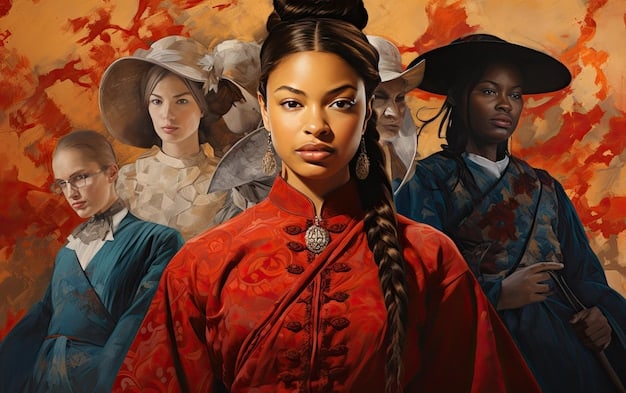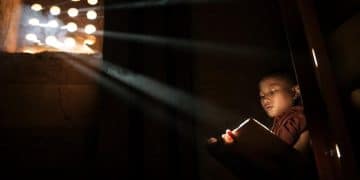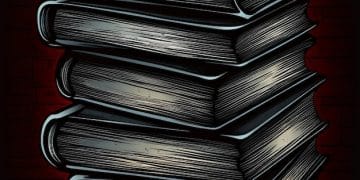How Classic American Novel Interpretation Evolved: A Critic’s View
The interpretation of classic American novels has undergone significant shifts in the past 50 years, influenced by evolving social, cultural, and theoretical perspectives, as highlighted by leading US literary critics.
How Has the Interpretation of Classic American Novels Changed Over the Last 50 Years According to Leading US Critics? This question delves into the dynamic world of literary criticism, exploring how evolving perspectives have reshaped our understanding of timeless American stories and their relevance to contemporary society.
The Rise of New Criticism and Its Limitations
New Criticism, prominent in the mid-20th century, emphasized close reading and the autonomy of the text. However, its limitations became apparent as critics began to question its ahistorical and apolitical stance.
Focus on Textual Analysis
New Criticism prioritized analyzing the internal elements of a novel, such as symbolism, imagery, and structure, to uncover its meaning, disregarding historical and cultural contexts.
The Problem of Objectivity
Critics adopting this approach often assumed a universal and objective interpretation, neglecting the influence of their own biases and the varying perspectives of readers.
- Emphasis on aesthetic unity over social relevance.
- Exclusion of historical and cultural contexts.
- Neglect of the reader’s role in constructing meaning.
- Promotion of a singular “correct” interpretation.
The New Critics’ focus on textual analysis, while valuable in some respects, proved inadequate in addressing the complex social and political dimensions of classic American novels.

Feminist Criticism and Gender Studies
Feminist criticism emerged as a powerful force, challenging traditional interpretations by examining gender roles, power dynamics, and representations of women in classic American novels.
Challenging Male-Centric Narratives
Feminist critics exposed the ways in which classic novels often marginalized or misrepresented female characters, reinforcing patriarchal ideologies.
Recovering Women’s Voices
They also sought to recover and celebrate the voices of female authors and characters, highlighting their experiences and perspectives.
- Analysis of gender stereotypes and power imbalances.
- Exploration of female characters’ agency and resistance.
- Examination of the social construction of gender.
- Reinterpretation of classic novels from a female perspective.
Feminist criticism has illuminated the gendered dimensions of classic American novels, fostering a more nuanced understanding of their portrayal of women and their impact on society.
The Impact of Poststructuralism and Deconstruction
Poststructuralism and deconstruction challenged the notion of fixed meaning and stable interpretations, emphasizing the role of language, power, and ideology in shaping our understanding of classic novels.
Deconstructing Binary Oppositions
Deconstructionist critics sought to dismantle binary oppositions, such as good/evil or male/female, revealing their inherent instability and the ways in which they reinforce dominant ideologies.
Authorial Intentionality
They questioned the idea of authorial intention, arguing that meaning is always open to interpretation and influenced by various forces beyond the author’s control.
- Emphasis on the instability of language and meaning.
- Rejection of fixed interpretations and objective truth.
- Focus on the power dynamics embedded in language.
- Deconstruction of traditional literary conventions.
Poststructuralism and deconstruction have introduced a level of complexity and uncertainty to the interpretation of classic American novels, encouraging readers to question assumptions and embrace multiple perspectives.
Race and Postcolonial Studies
Race and postcolonial studies have brought attention to issues of race, ethnicity, and colonialism in classic American novels, revealing the historical and social contexts that shaped their representations of marginalized communities.
Challenging Racial Stereotypes
Critics examined how classic novels perpetuated racial stereotypes and discriminatory attitudes, often reflecting the prejudices of their time.
Recovering Marginalized Voices
They also sought to recover the voices and experiences of marginalized communities, highlighting their resistance and resilience in the face of oppression.

- Analysis of racial representation and power dynamics.
- Exploration of the legacy of colonialism and slavery.
- Examination of the intersection of race, class, and gender.
- Reinterpretation of classic novels from a non-white perspective.
Race and postcolonial studies have enriched our understanding of classic American novels by unveiling their engagement with race, ethnicity, and colonialism, fostering a more inclusive and critical perspective.
The Influence of Cultural Studies
Cultural studies broadened the scope of literary criticism by incorporating insights from sociology, anthropology, and other disciplines, examining the cultural contexts and social forces that shape both the creation and reception of classic American novels.
Popular Culture and Mass Media
Critics explored the ways in which popular culture and mass media influence our understanding of literature and its role in society.
Reader Response Theory
They also emphasized the role of the reader in constructing meaning, acknowledging the diversity of interpretations and the impact of social and cultural backgrounds.
- Emphasis on the cultural contexts of literary production.
- Exploration of the relationship between literature and society.
- Analysis of the impact of popular culture on literary interpretation.
- Recognition of the reader’s active role in constructing meaning.
Cultural studies have provided a broader framework for understanding classic American novels, emphasizing their engagement with cultural norms and values, and acknowledging the importance of reader response.
Queer Theory and LGBTQ+ Perspectives
Queer theory and LGBTQ+ perspectives have challenged heteronormative assumptions in classic American novels, exploring issues of sexuality, identity, and representation.
Challenging Heteronormative Assumptions
Critics have examined the ways in which classic novels often reinforce heteronormative ideologies, marginalizing or erasing LGBTQ+ experiences.
Recovering Queer Subtexts
They also sought to uncover queer subtexts and alternative readings that challenge dominant interpretations.
- Analysis of sexual identity and representation.
- Exploration of the social construction of sexuality.
- Examination of the intersection of sexuality, gender, and race.
- Reinterpretation of classic novels from an LGBTQ+ perspective.
Queer theory and LGBTQ+ perspectives have broadened the scope of literary criticism, fostering a more inclusive and nuanced understanding of classic American novels by challenging heteronormative assumptions and highlighting the diversity of human experience.
The Future of Interpreting Classic American Novels
As society continues to evolve, so too will the interpretation of classic American novels. Future critics are likely to employ interdisciplinary approaches, incorporating insights from fields such as environmental studies, disability studies, and critical race theory, to address emerging social and political issues.
Ultimately, the interpretation of classic American novels remains a dynamic and ever-evolving process, reflecting the changing concerns and perspectives of each generation of readers and critics.
| Key Point | Brief Description |
|---|---|
| 🧐 New Criticism | Focus on textual analysis, neglecting social contexts. |
| ♀️ Feminist Criticism | Examines gender roles and power dynamics. |
| 🗣️ Race Studies | Addresses race, ethnicity, and colonialism. |
| 🌈 Queer Theory | Challenges heteronormative assumptions. |
Frequently Asked Questions
▼
New Criticism is a literary theory that emphasizes close reading and textual analysis, focusing on the internal elements of a text while disregarding historical and cultural contexts.
▼
Feminist criticism has brought attention to gender roles and power dynamics in classic novels, challenging male-centric narratives and recovering the voices of female characters.
▼
Poststructuralism challenges fixed meanings, emphasizing language’s role in shaping understanding and deconstructing binary oppositions to reveal inherent instability.
▼
These studies address race, ethnicity, and colonialism, revealing historical contexts and racial stereotypes, while recovering marginalized voices in classic American novels.
▼
Queer theory challenges heteronormative assumptions, exploring sexuality, identity, and representation, uncovering queer subtexts, and promoting inclusive readings.
Conclusion
The interpretation of classic American novels has transformed significantly over the past 50 years, influenced by new critical lenses such as feminist criticism, poststructuralism, race and postcolonial studies, cultural studies, and queer theory, fostering a more nuanced and inclusive understanding.





